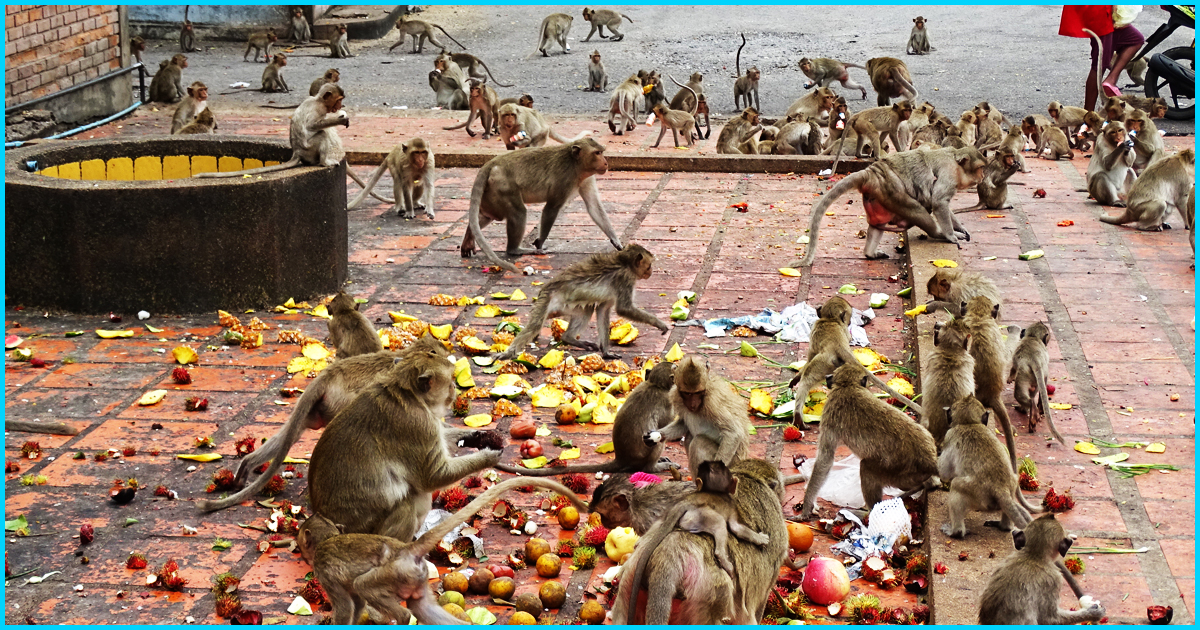In India, monkeys are often revered by most. Yet, there has been a growing intolerance towards the furry-tailed creature. Recently, there have been instances of monkeys attacking and killing humans in Uttar Pradesh’s Agra and Meerut.
On November 12, a 59-year-old woman in Kagraul area of Agra died after she was attacked by a bunch of monkeys. At 11:30 pm at night on Monday, Bhuran Devi had gone to a nearby field to relieve herself. A bunch of monkeys attacked her and then gnawed and clawed her. They did not leave her until she was on the ground and unable to move because of her injuries.
The victim was taken to a private hospital but did not survive treatment. “Preliminary investigation revealed that the woman suffered severe injuries after she was bitten by the monkeys, leaving her bleeding profusely. As the victim did not get proper medical attention, she succumbed to her injuries during treatment at the private clinic,” Sanjul Pandey, station house officer of Kagraul said.
12-day-old baby killed by monkeys
On November 12, a 12-day-old baby was snatched away from his mother’s lap by a monkey and it left the baby severely injured on the neighbour’s terrace in the outskirts of Agra city in Kachhara area.
The mother was feeding the infant in the evening when the incident took place. The monkey snatched the baby from her and before she could react, the baby was already dangling in the monkey’s clutch. The monkey took the baby away to the rooftop. Family members tried to lure the monkey with eatables. When a neighbour tried to reach the monkey, it clawed and bit the baby’s neck. Eventually, leaving the bleeding child on the terrace, the monkey vanished.
The baby was immediately taken to a hospital but was declared brought dead.
Monkey stone man to death
In Tikri village of Baghpat in Uttar Pradesh, a 72-year-old man was stoned to death by a bunch of monkeys when he went to collect wood for havan on October 20. When the old man was collecting wood, the monkeys got hold of bricks from a nearby dilapidated building.
The bricks hit his head and chest and he died in a hospital. The family wanted to file an FIR against the monkeys but the police registered a case of an accident in the diary.
No protected status
After the death of the 12-day-old baby, environmentalists and activists have been demanding the removal of monkeys from the list of protected species under the Wild Life Act.
“For over a decade, we have been demanding permission to transfer monkeys to forest areas and setting up of a facility to sterilise them, but so far we have failed to get the government’s permission,” said Satyamev Jayate trustee Mukesh Jain, addressing the conference, reported NDTV.
The Agra Municipal Corporation officials data reveals that the number of monkeys in the city has gone up beyond 50,000. Meanwhile, taking cognizance of the two incidents, Agra mayor Naveen Jain on Wednesday said, “Monkey menace has been increasing in the city since the past several years due to the negligence of the forest department and the district administration as nothing has been done to check their population growth in the city,” reported The Times of India.
Man-monkey conflict
Activists and environmentalists are of the opinion that monkeys are not generally aggressive. Their behaviour has become more aggressive as they are losing out on their habitat due to the ever-expanding human population.
India’s growing population has confined wildlife to the ever-shrinking forests and grasslands. Reports have come out which show that between the years 2014-2017, one person lost his/her life every day because of the man-animal conflict.
The growth of human settlement is considered an economic development, but it is the animals who are paying a heavy price as they are competing with humans for food and shelter. Wildlife experts have said that territorial animals lack space within reserves and their prey also lack enough fodder to survive on. This forces wild animals to move out and venture close to human habitations in search of food.
We have started to change the natural wildlife ecosystem and started habitation in wildlife areas. It is us who are encroaching on their land and taking away their livelihood. They are animals and they don’t know any better. They depend on their natural instincts to survive. There needs to be more awareness about the man-animal conflict.
Also Read: Uttarakhand: Like Tigress Avni, Shooter Invited To Kill ‘Man Eater’ Leopard













